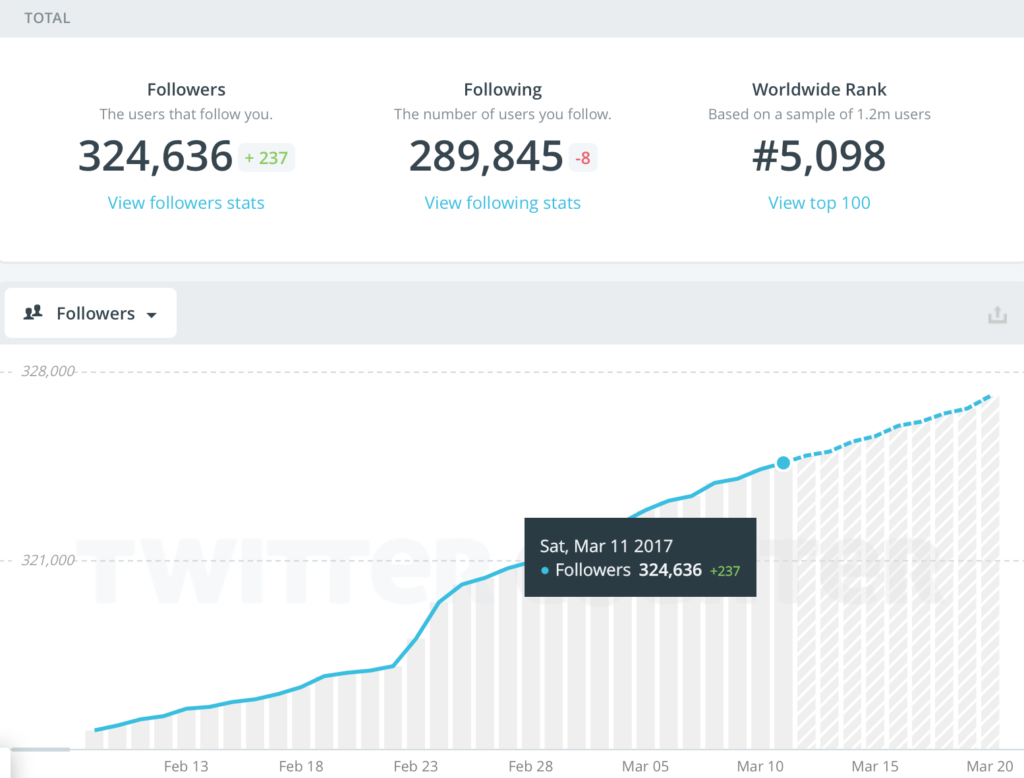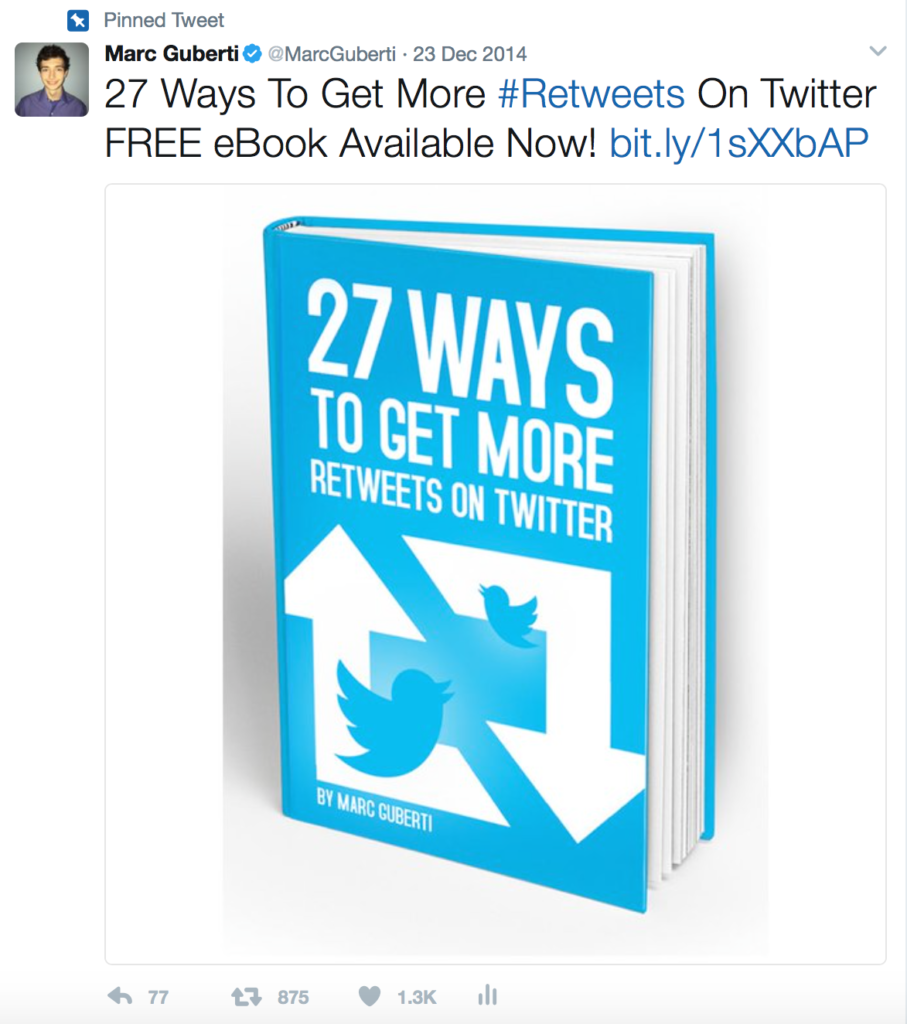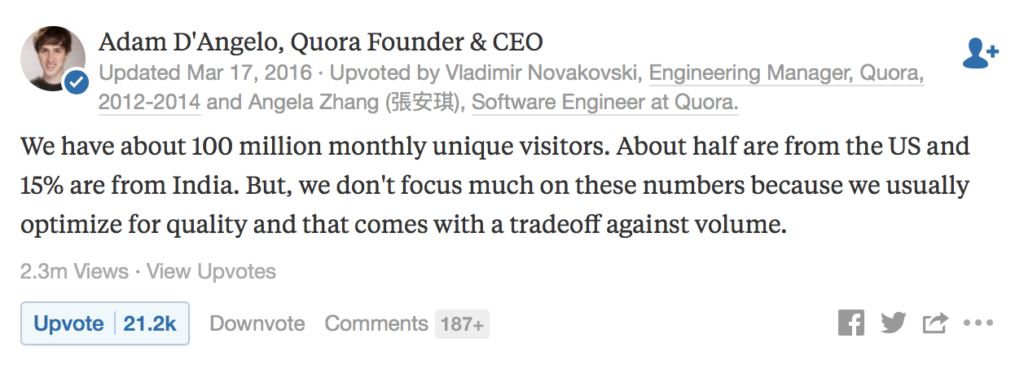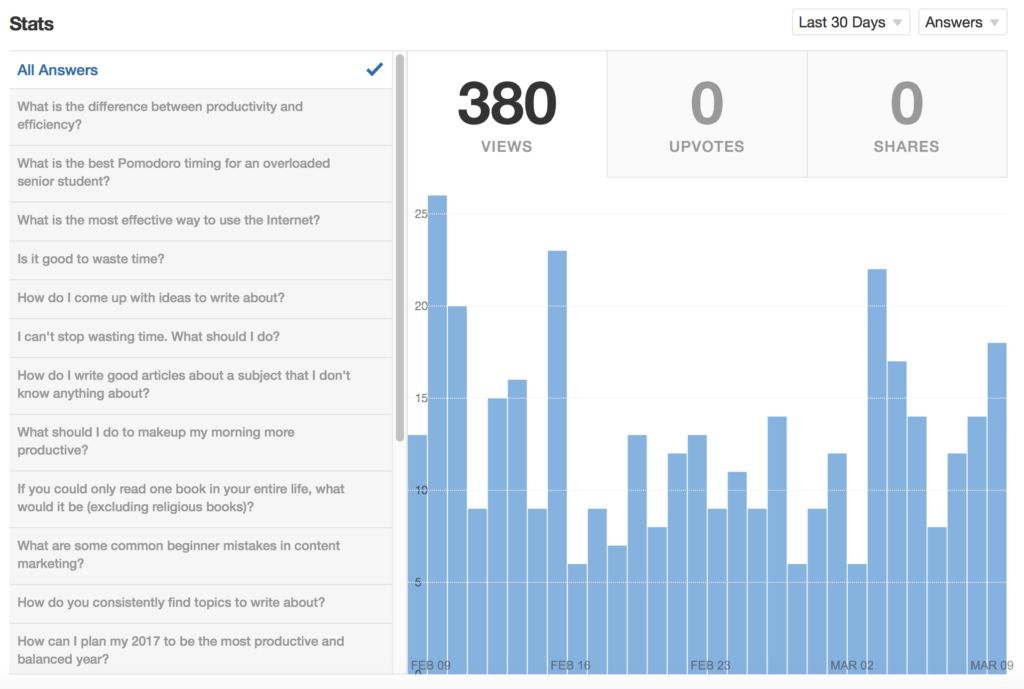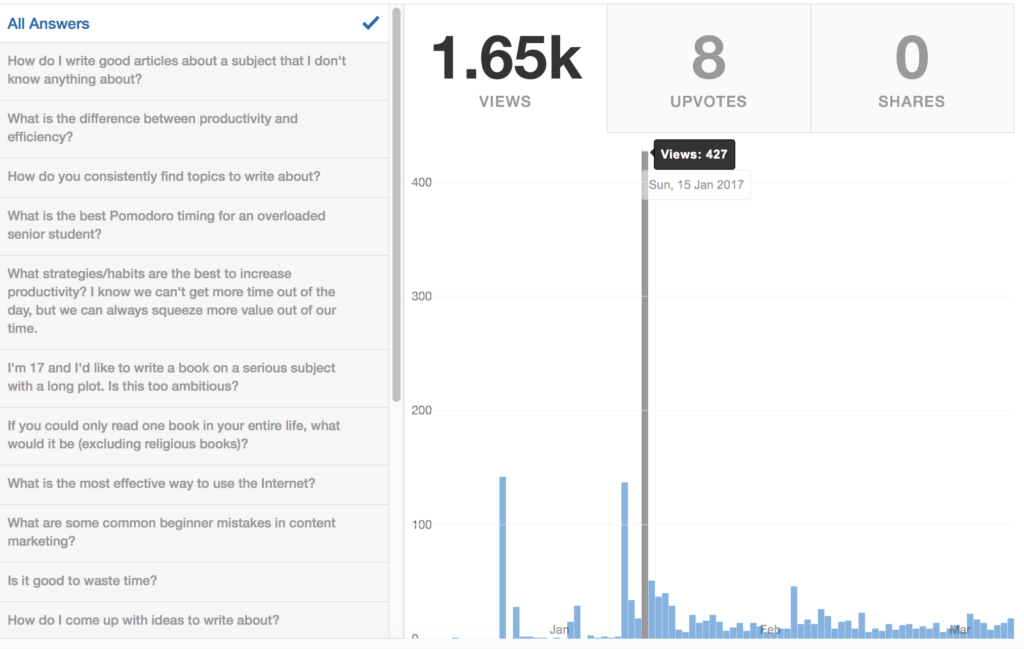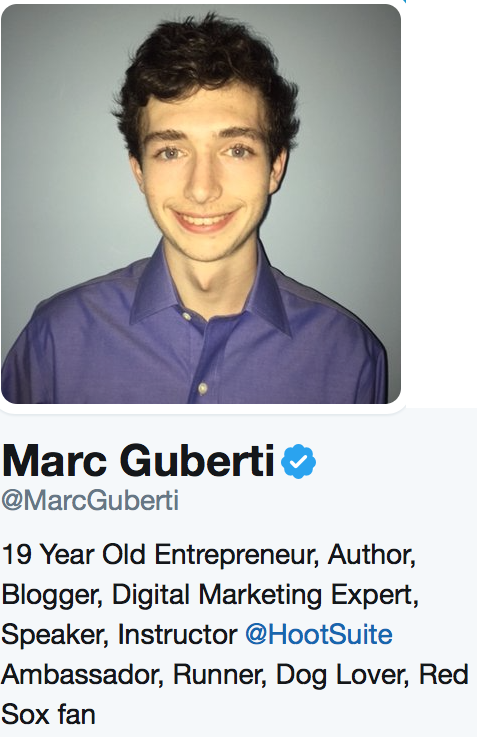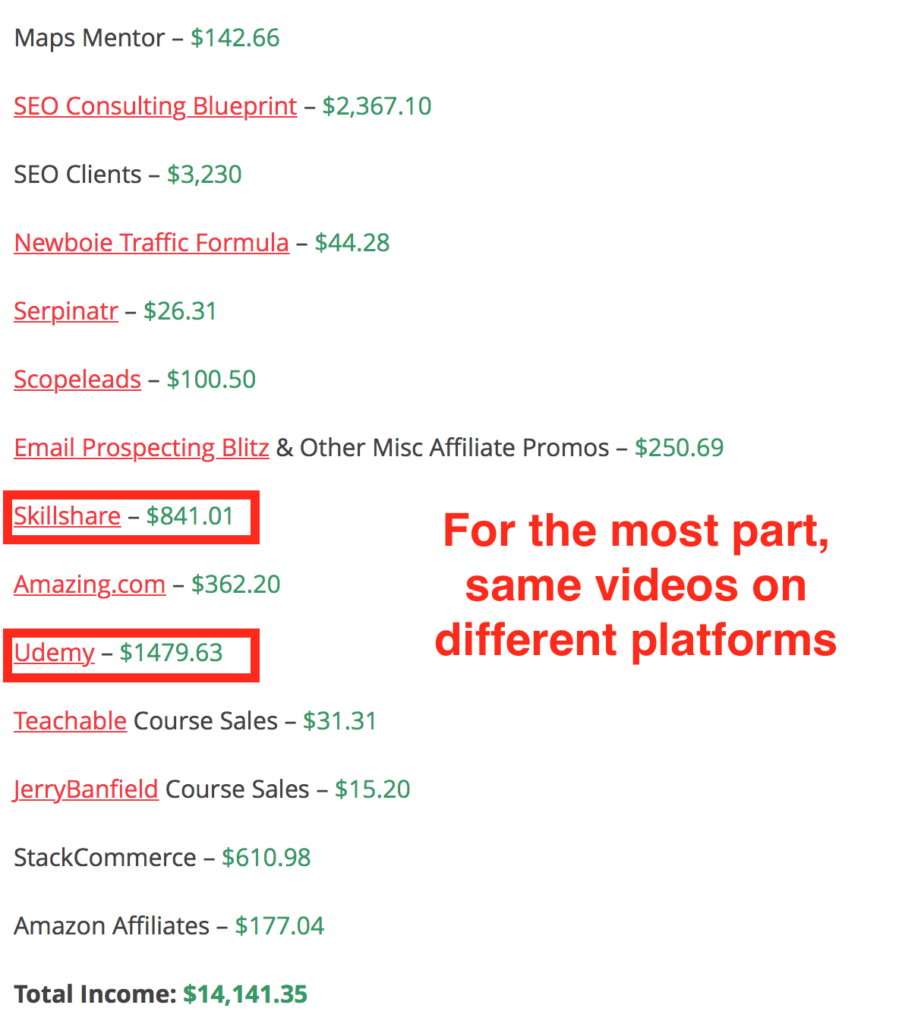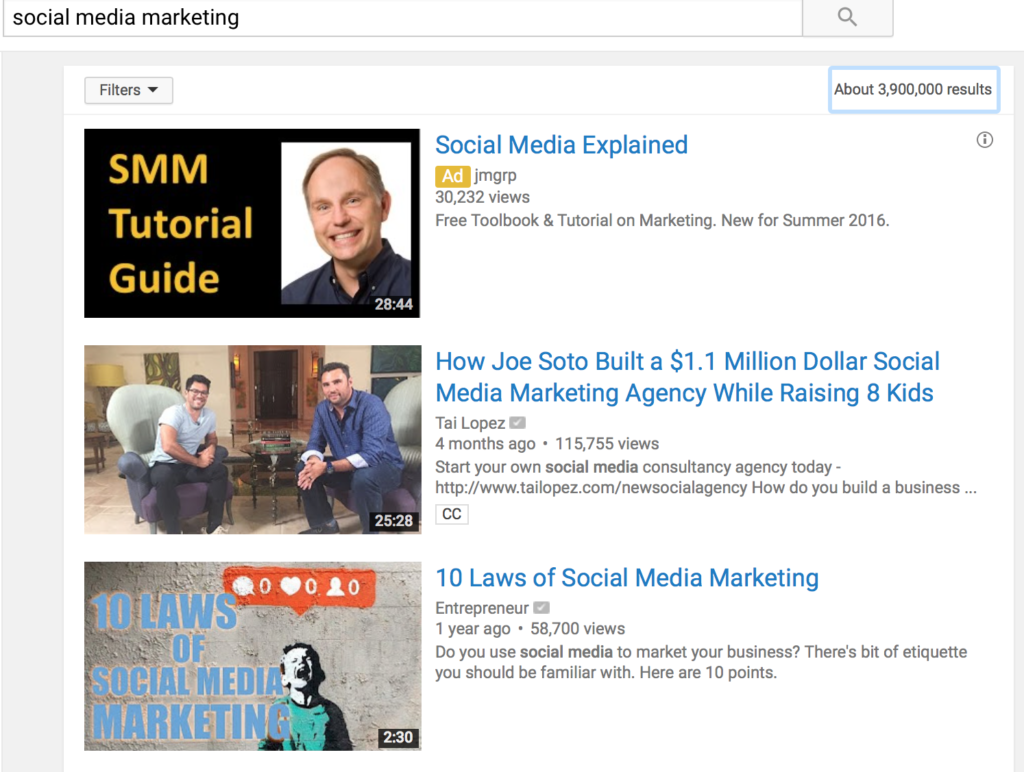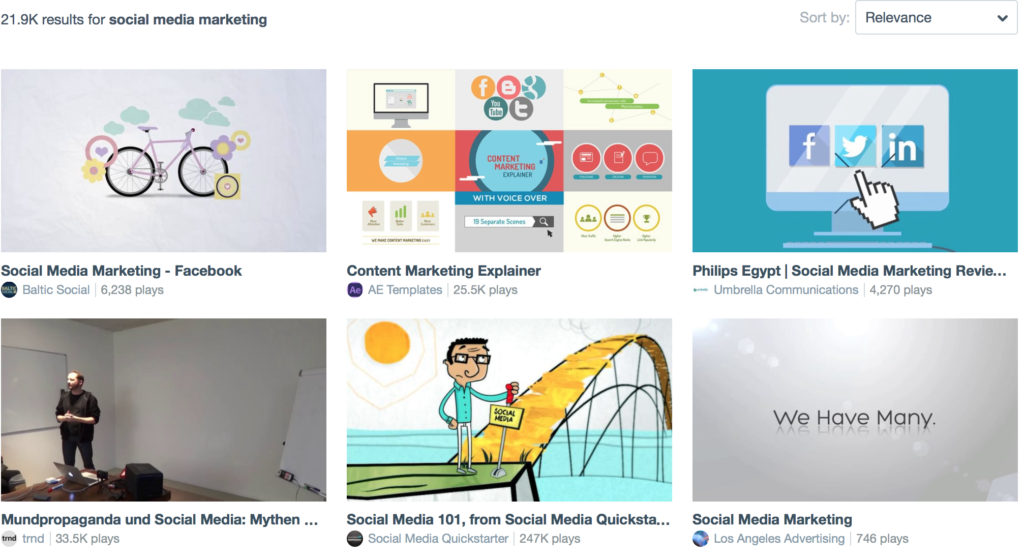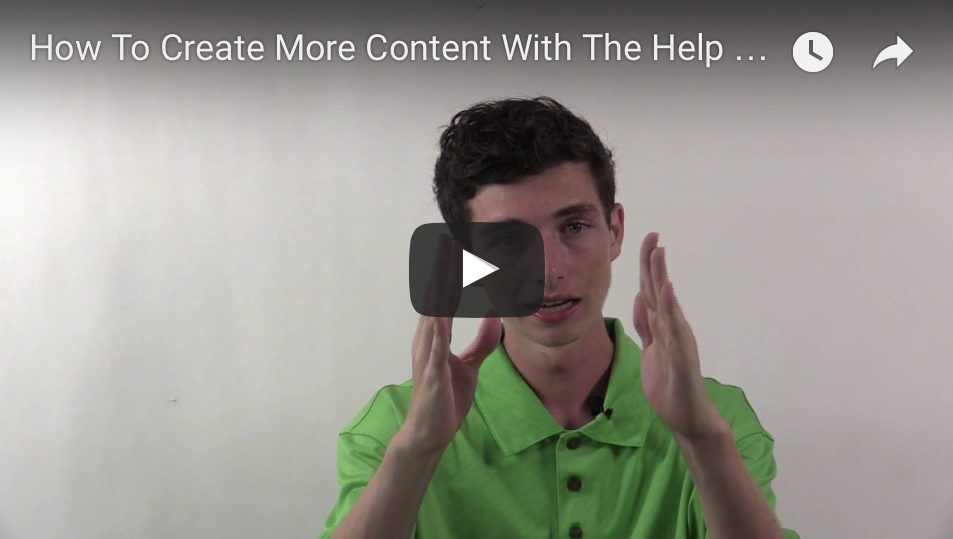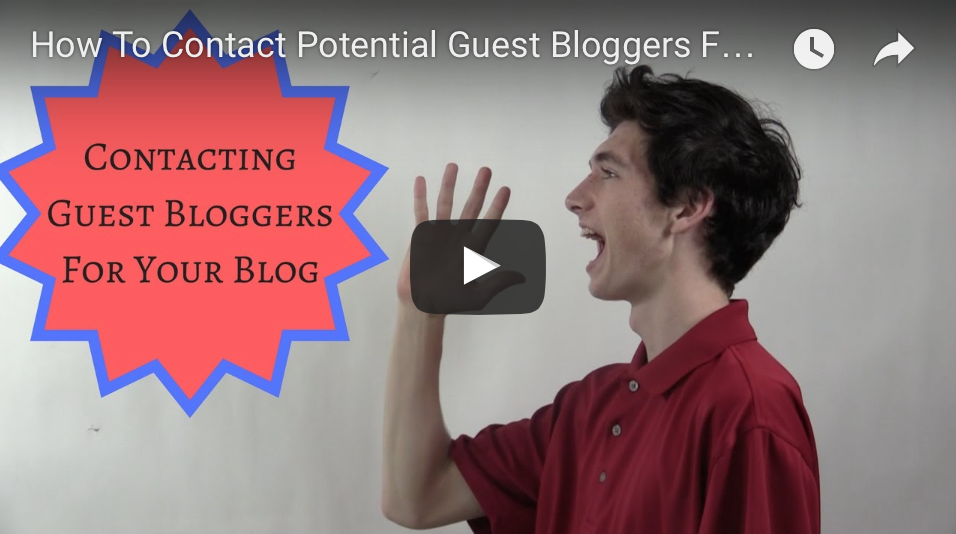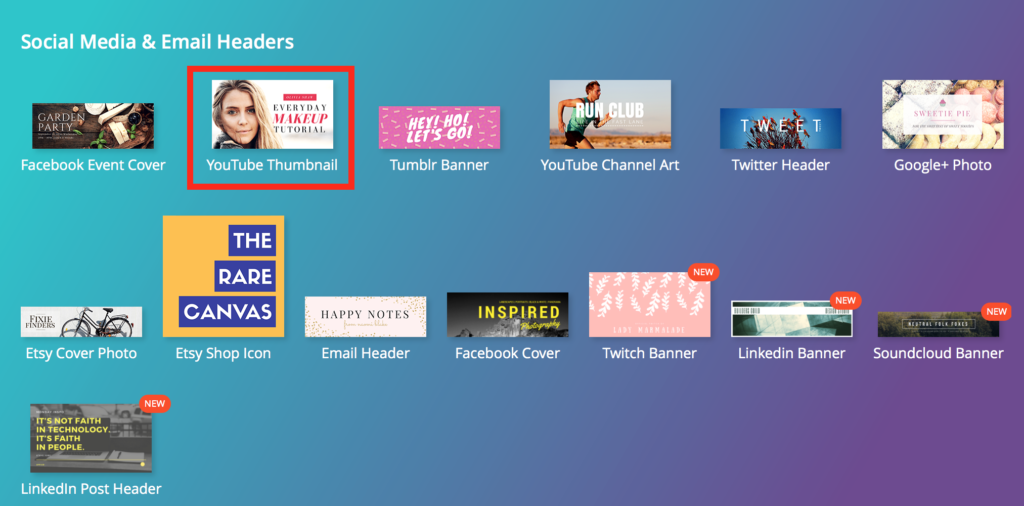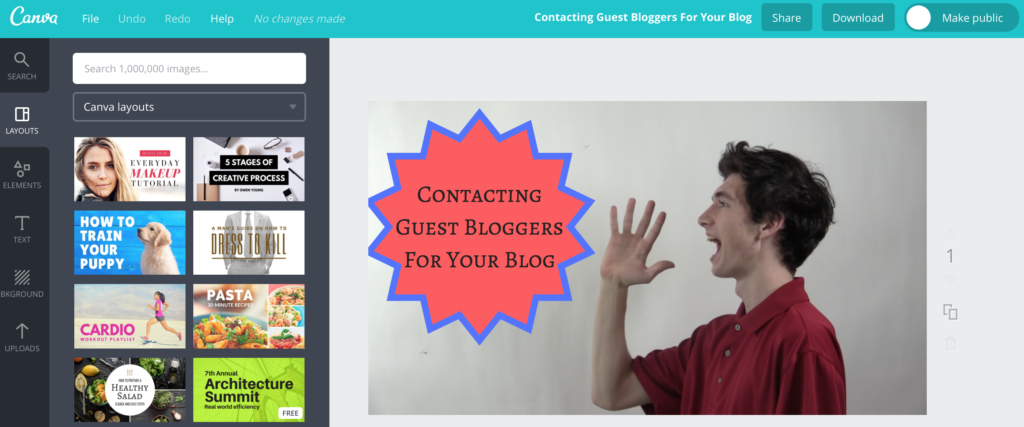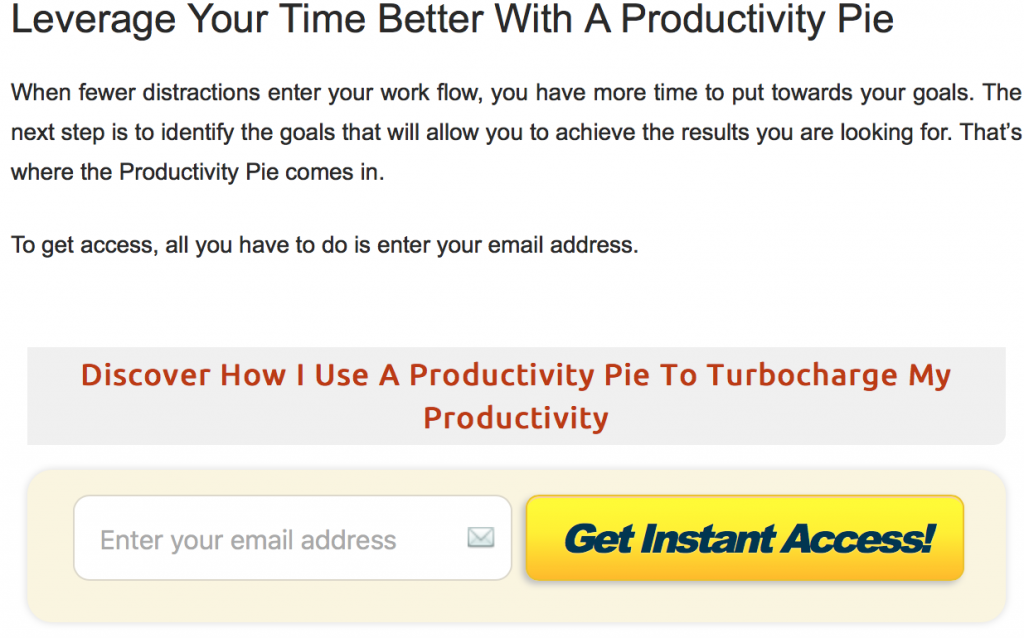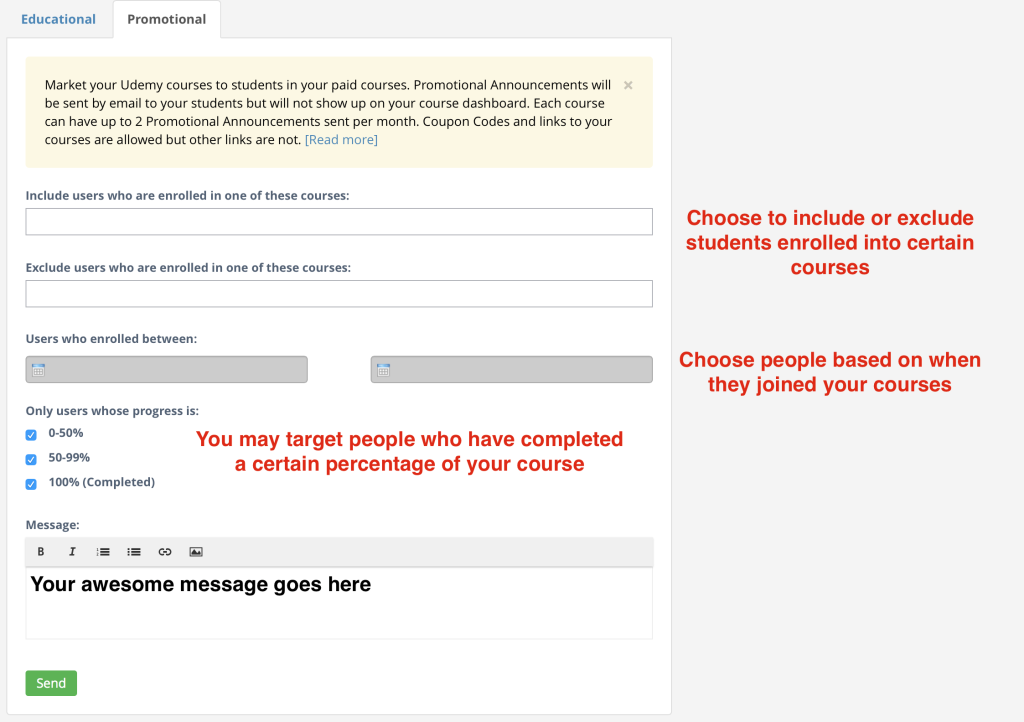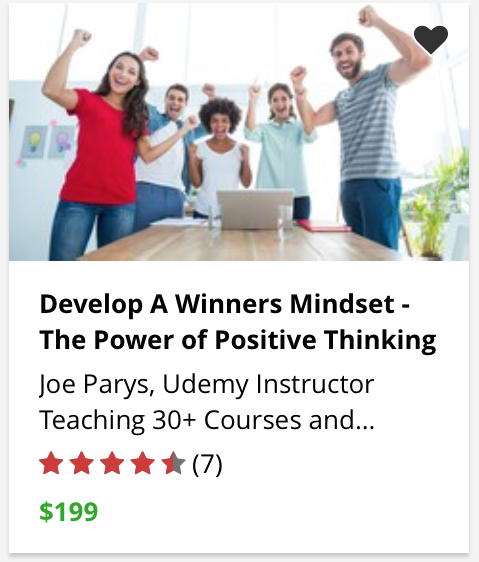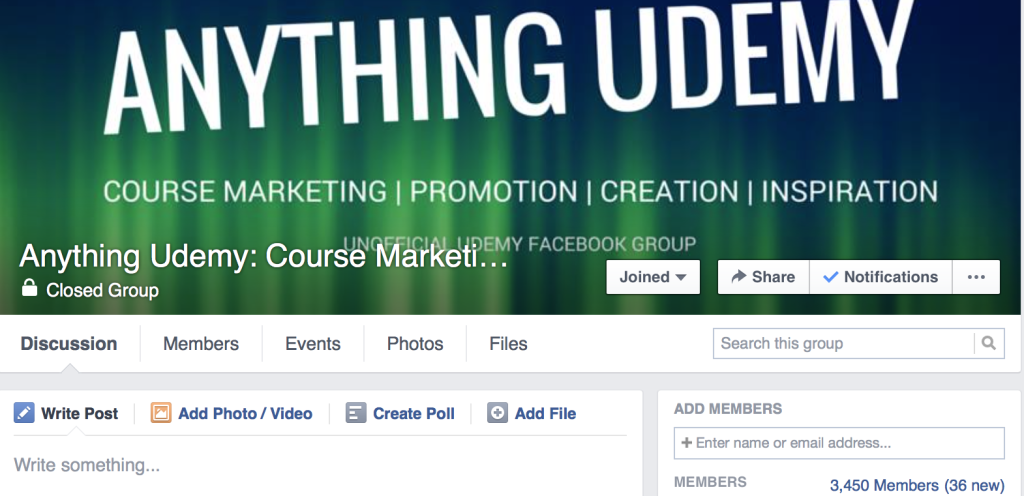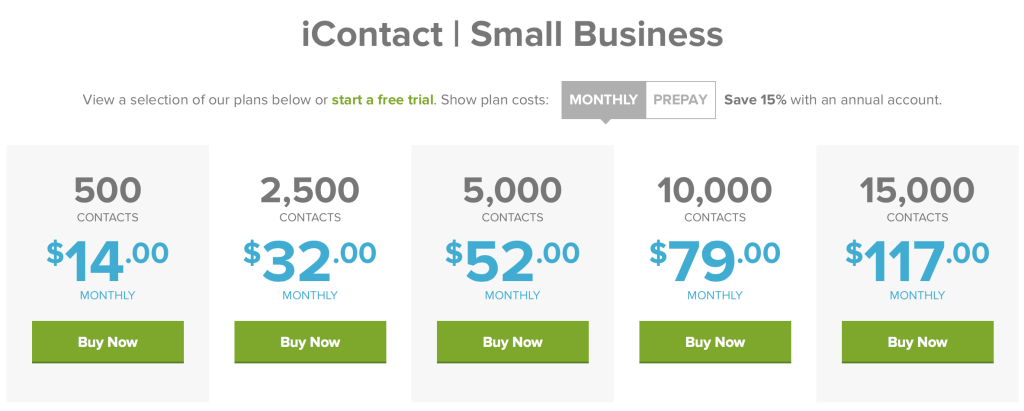
The blogging habits we use to guide us play a significant role in our content marketing efforts.
The most successful bloggers live by a series of habits that guide them through the world of blogging. Blog traffic comes easy to these individuals who enjoy hundreds of thousands of monthly visitors.
As part of my New Year’s resolution to surpass 100,000 monthly visitors, I decided to analyze these successful bloggers to see what makes them tick. How do they surpass 100,000 monthly visitors, and how can I achieve the same results?
With this in mind, I’ve written a blog post that details the habits successful bloggers use to attain their goals. There are five blogging habits you should develop if you want to become a full-time blogger.
#1: Write At Least 1,000 Words Per Day
No one said blogging would be easy. This first habit is perhaps the most important because you can’t promote content until you’ve created it.
Not only does writing content matter, but writing lengthy content matters, too. Most blog posts featured on the first page of Google search results exceed 2,000 words.
Writing at least 1,000 words a day will give you a total of 7,000 words each week that you can dedicate to your blog. If you write 2,000-word blog posts, you’ll have at least three blog posts every week.
However, some bloggers write even lengthier content more frequently and consistently. That’s why 1,000 words per day is the absolute minimum. But if you manage to write over 1,000 words, even better.
Writing 1,000 words per day requires time, and time is more scarce than ever. So how is it possible to accomplish this goal every single day?
The best way to free up your time is by outsourcing work to freelancers. If it weren’t for outsourcing, I wouldn’t be able to accomplish many other important tasks for my business.
I simply wouldn’t be able to write lengthy blog posts, produce one YouTube video every day, create training courses, or write books. Many of my ventures would be sidelined if I tried to do all of the work by myself. And I’m always looking for more ways to outsource my business.
The more you outsource, the more time you create for yourself.
With that said, you also need to use your own time productively. Many distractions will try to keep you from writing 1,000 words each day, but with practice, you can overcome them.
Most distractions are a result of bad habits. The best way to eliminate these bad habits is to replace them with better habits such as writing more content for your blog and reading books during your breaks.
Plus, writing 1,000 words a day will make you a better writer. Value will begin to come naturally. The challenge is to write valuable content even when you’re pressed for time.
#2: Conduct Research For Every Piece You Write
For every blog post you publish, you should conduct a massive amount of research. In the past, I would write lengthy blog posts without doing research, and then wonder why I wasn’t getting any long-term traffic.
But ever since I’ve added research to my content marketing efforts, my traffic has gone up. Many of the top bloggers I analyzed conduct hours of content research just to write one great blog post. And it makes sense because linking to great content benefits both you and your readers.
Your readers are getting higher quality content (and are more likely to share it), and you get more search engine traffic. Talk about a win-win. And there are more benefits to linking out than just that: Here’s the complete list from SEO Moz.
Each time you write a blog post, expand upon it by linking to other relevant blog posts found that help strengthen your content. Adding these links helps your blog grow, regardless of whether the links lead to your own content (internal links) or to someone else’s content (external links).
The benefit of internal linking is that people will spend more time on your blog, lowering your bounce rate (likelihood of someone leaving after viewing one page/post on your blog). And a lower bounce rate will help your SEO efforts.
External links to high-authority sites let search engines know that your blog also has authority. Since you’re promoting quality content, search engines think your content must also contain value, pushing it higher up the search engine rankings.
Content research takes a significant amount of time, but you’ll end up with a more valuable blog post. Readers will engage with it for longer periods of time and you’ll get more traffic.
I like to Google my way to the articles that I link to in my blog posts. And sometimes I use other tools for my content research.
Conducting content research becomes much easier as you spend more time writing content and engaging with people in your niche.
#3: Ask Questions To Expand Your Content
Have you ever finished a blog post only to realize that it’s too short for search engines? I have, several times, but not anymore. Before I reveal what I did differently, I’ll tell you what I was doing wrong.
For a blog post like this, I would have come up with the title and jotted down the five tactics I intended to mention within the post. While this approach made it easy to crank out content, I’d often get stuck at a little over 1,000 words. Sometimes I’d fall short at 800-900 words.
Now that never happens. Why? Because I ask myself questions that naturally make my content longer. Socratic questioning (asking yourself questions) is a form of conversation that has been used for thousands of years, and it still works today.
For all of the tactics I discuss in this blog post, I asked myself three questions. When asking these questions, I saw myself as a reader who wanted to learn as much as possible from this blog post.
What are three things people want to know about this particular tip? What would they ask?
By anticipating these questions in advance, I no longer have to worry about word count. Since I focus less on increasing word count, I have more time to focus on providing a better experience.
Here’s an example of an outline I did for the 4th habit I mention in this blog post:
#4: Follow The 80/20 Rule
•What is it?
•How do I market myself most effectively?
•How do I make it easy?
Keep this outline in mind when we get to the 80/20 rule.
Asking three questions definitely adds time to my outline process, but only by about 3-5 minutes, and it’s worth it when you consider my final draft.
So I may spend 5-10 minutes expanding upon my outline with thoughtful questions, depending on how long the outline is to begin with. But, in every case, it never takes an entire day.
I just write down the first three questions that come to mind. If I struggle to think of a third question, I leave it alone and address the next portion of my outline. I don’t want to sit around and ponder because I know I’ve got a behemoth of a blog post ahead of me.
The cool thing about using Socratic questioning is that you turn each of your tactics (or in this case, habits) into a mini blog post. You’ll want to write a blog post that contains a series of mini blog posts all wrapped up into one because that’s how you provide massive value that ranks well with search engines.
Creating an outline like this is easy. Writing the content is simple, albeit time consuming. But the more time you open for yourself, the more you serious you are about blogging.
#4: Follow The 80/20 Rule — 80% marketing, 20% content creation
The 80/20 rule is also known as Pareto’s Principle. With this principle, 80% of your results come from 20% of your efforts.
This 80/20 rule for blogging slightly different. It asks that you spend 80% of your time marketing your content and only 20% of your time actually creating content.
Thus, if it takes you an hour to write a blog post, you should spend four more hours marketing it. And since the Socratic questioning technique mentioned above increases your writing time, your marketing time will also increase.
Of course, you can skip the marketing all together, but you won’t get very far with your blog. There’s simply too much content, and competition, on the web. You’re not just creating content. You’re creating a content brand.
And just like any other business, your brand needs effective marketing to become a surefire winner. Successful bloggers write a bunch of epic blog posts, but their marketing efforts are why we end up reading them.
Most of the efforts you’ll make as a successful content marketer involve connecting with other bloggers. In an interview, Neil Patel explained that, when he was getting started, he would contact anywhere from 400-500 people about his new blog post.
He asked each person to share his latest blog post. Neil found these people using BuzzSumo, his go-to content marketing tool (he refers to it as God’s Gift To Marketers).
BuzzSumo lets you see everyone who has shared popular blog posts in your niche. You can then contact these people and let them know about your own blog post.
Of course, you can try to hunt down these people on social media, but it’s much more time consuming. The best way to do it for free is to use a social network’s search engine and search a blog post’s title.
Here’s what it would look like on Twitter if, for example, you wanted to search for my guest post 5 Ways To Flood Your Blog With Traffic Using Pinterest (currently my most successful guest post).

However, this strategy takes FOREVER and BuzzSumo does the same thing much faster. If you can fit $99/mo into your budget, BuzzSumo is a worthwhile investment for your content marketing efforts.
Regardless of which option you use, contacting hundreds of people involves a lot of work on your part. The best thing you can do to cut down your work time is to create a rubric message.
Rather than re-write the same email over and over, you can simply copy and paste the body of the email and change a few things to personalize it (addressing each person by his or her first name, for example).
#5: Voraciously Read Other Blogs
Successful bloggers constantly read other people’s blogs. If you look at any of their blog posts, you can tell they’ve read several other blog posts on the subject before finishing their own.
You wouldn’t be shocked to hear that authors read several books before writing their own. So it should come as no surprise that bloggers read several blog posts before writing their posts.
Sometimes a blogger will write two blog posts back to back, but even then, intense research goes into each one. The research is based on blog posts that were read in advance.
However, successful bloggers don’t just read any blog on the web. They read blogs related to their niche. They want to gather as much insight as possible. But they also want to see what’s working for audiences in their niche.
Which pull-words result in more engagement? How is this blogger getting more shares? How is the blogger making revenue? Successful bloggers ask themselves all of these questions, and they find the answers by conducting research.
During this exploration, more content ideas emerge. And it’s easier to learn something when you actively write about what you are learning. By repeatedly writing content about subjects they want to master, bloggers eventually become experts in their field.
Try to read other people’s content for at least 30 minutes every day. The great thing about blogs is that they’re available online as compared to books (unless you read eBooks, but I prefer paperbacks).
If you have your smartphone with you, you can easily search for blog posts anytime you’re waiting for something to happen. Read a blog post while you’re waiting for a performance to begin. If you are waiting for an Uber driver, read a blog post until he shows up.
As you read, take notes on what you learn and write down content ideas as you go. That way, you’ll be armed with more knowledge that you can refer to within your next blog post.
In Conclusion
The most successful bloggers spend hours upon hours in a given day on their blogs. They treat their blogs like a full-time brand because that’s exactly what they are.
You may only be able to commit to your blog part-time, but you can still live by these blogging habits. A blog post like this is a lot to soak up in one sitting. However, you can always start small and build upon these success habits.
Habits by nature are obtained through gradual development. Out of every success tactic I came across during my analysis, contacting 400-500 people for each of my blog posts seemed the most daunting.
Why does it have to be 400-500? Why not start with 10? You can then inch your way towards 20 people, 30, 40, and gradually make your way to the 400-500 threshold.
Neil no longer contacts 400-500 people every time he writes a new blog post. Why? Because he doesn’t have to. But when he was just getting started, he made those contacts in order to build momentum.
All of these habits will become easier over time and yield greater results as you exert more effort towards each.
Now Here’s What I Want From You
Which of these habits do you think is most important? Do you have a 6th habit for us?
Have a question for me? Leave a comment now. I read them all!
And if you know anyone else who needs this burst of insight, please be sure to pass it on.
[Tweet “5 #Blogging Habits That Will Turn You Into A Full-Time Blogger.”]
If you’re new here, join my mailing list using the form below. You’ll get a ton of free content just like this.
Until next time,
-Marc
*image credit: Pixabay.com

